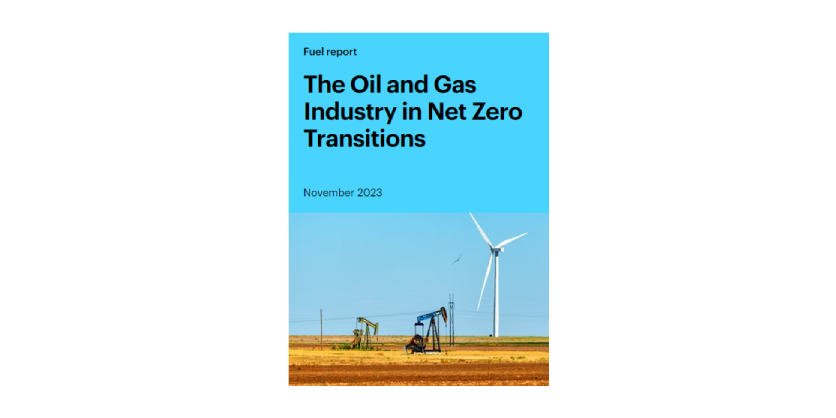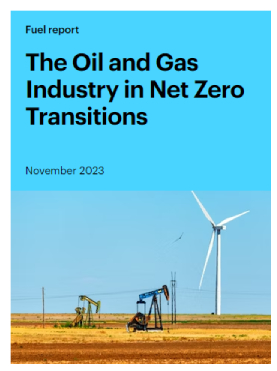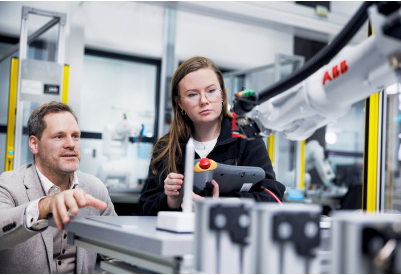Oil And Gas Industry Faces Moment of Truth – And Opportunity to Adapt – As Clean Energy Transitions Advance
November 23, 2023

Oil and gas producers must choose between contributing to a deepening climate crisis or becoming part of the solution by embracing the shift to clean energy, IEA special report says
Oil and gas producers face pivotal choices about their role in the global energy system amid a worsening climate crisis fuelled in large part by their core products, according to a major new special report from the IEA that shows how the industry can take a more responsible approach and contribute positively to the new energy economy.
The Oil and Gas Industry in Net Zero Transitions analyses the implications and opportunities for the industry that would arise from stronger international efforts to reach energy and climate targets. Released ahead of the COP28 climate summit in Dubai, the special report sets out what the global oil and gas sector would need to do to align its operations with the goals of the Paris Agreement.
Even under today’s policy settings, global demand for both oil and gas is set to peak by 2030, according to the latest IEA projections. Stronger action to tackle climate change would mean clear declines in demand for both fuels. If governments deliver in full on their national energy and climate pledges, demand would fall 45% below today’s level by 2050. In a pathway to reaching net zero emissions by mid-century, which is necessary to keep the goal of limiting global warming to 1.5 °C within reach, oil and gas use would decline by more than 75% by 2050.
Yet the oil and gas sector – which provides more than half of global energy supply and employs nearly 12 million workers worldwide – has been a marginal force at best in transitioning to a clean energy system, according to the report. Oil and gas companies currently account for just 1% of clean energy investment globally – and 60% of that comes from just four companies.
“The oil and gas industry is facing a moment of truth at COP28 in Dubai. With the world suffering the impacts of a worsening climate crisis, continuing with business as usual is neither socially nor environmentally responsible,” said IEA Executive Director Fatih Birol.
“Oil and gas producers around the world need to make profound decisions about their future place in the global energy sector. The industry needs to commit to genuinely helping the world meet its energy needs and climate goals – which means letting go of the illusion that implausibly large amounts of carbon capture are the solution. This special report shows a fair and feasible way forward in which oil and gas companies take a real stake in the clean energy economy while helping the world avoid the most severe impacts of climate change.”
IEA Executive Director Fatih Birol
The global oil and gas industry encompasses a large and diverse range of players – from small, specialised operators to huge national oil companies. Attention often focuses on the role of the private sector majors, but they own less than 13% of global oil and gas production and reserves.
Every company’s transition strategy can and should include a plan to reduce emissions from its own operations, according to the report. The production, transport and processing of oil and gas results in nearly 15% of global energy-related greenhouse emissions – equal to all energy-related greenhouse gas emissions from the United States. As things stand, companies with targets to reduce their own emissions account for less than half of global oil and gas output.
To align with a 1.5 °C scenario, the industry’s own emissions need to decline by 60% by 2030. The emissions intensity of oil and gas producers with the highest emissions is currently five-to-ten times above those with the lowest, showing the vast potential for improvements. Furthermore, strategies to reduce emissions from methane – which accounts for half of the total emissions from oil and gas operations – are well-known and can typically be pursued at low cost.
While oil and gas production is vastly lower in transitions to net zero emissions, it will not disappear – even in a 1.5 °Cscenario. Some investment in oil and gas supply is needed to ensure the security of energy supply and provide fuel for sectors in which emissions are harder to abate, according to the report. Yet not every oil and gas company will be able to maintain output – requiring consumers to send clear signals on their direction and speed of travel so that producers can make informed decisions on future spending.
The USD 800 billion currently invested in the oil and gas sector each year is double what is required in 2030 on a pathway that limits warming to 1.5 °C. In that scenario, declines in demand are sufficiently steep that no new long-lead-time conventional oil and gas projects are needed. Some existing oil and gas production would even need to be shut in.
In transitions to net zero, oil and gas is set to become a less profitable and riskier business over time. The report’s analysis finds that the current valuation of private oil and gas companies could fall by 25% from USD 6 trillion today if all national energy and climate goals are reached, and by up to 60% if the world gets on track to limit global warming to 1.5 °C.
Opportunities lie ahead despite these challenges. The report finds that the oil and gas sector is well placed to scale up some crucial technologies for clean energy transitions. In fact, some 30% of the energy consumed in 2050 in a decarbonised energy system comes from technologies that could benefit from the industry’s skills and resources – including hydrogen, carbon capture, offshore wind and liquid biofuels.
However, this would require a step-change in how the sector allocates its financial resources. The oil and gas industry invested around USD 20 billion in clean energy in 2022, or roughly 2.5% of its total capital spending. The report finds that producers looking to align with the aims of the Paris Agreement would need to put 50% of their capital expenditures towards clean energy projects by 2030, on top of the investment required to reduce emissions from their own operations.
The report also notes that carbon capture, currently the linchpin of many firms’ transition strategies, cannot be used to maintain the status quo. If oil and natural gas consumption were to evolve as projected under today’s policy settings, limiting the temperature rise to 1.5 °C would require an entirely inconceivable 32 billion tonnes of carbon captured for utilisation or storage by 2050, including 23 billion tonnes via direct air capture. The amount of electricity needed to power these technologies would be greater than the entire world’s electricity demand today.
“The fossil fuel sector must make tough decisions now, and their choices will have consequences for decades to come,” Dr Birol said. “Clean energy progress will continue with or without oil and gas producers. However, the journey to net zero emissions will be more costly, and harder to navigate, if the sector is not on board.”
IEA Executive Director Fatih Birol
More Information
The report sets out a fair and feasible way forward in which oil and gas companies and producer economies take a real stake in the clean energy economy while helping the world avoid the most severe impacts of climate change.
Related Story
Energy Technology Perspectives 2023
Energy Technology Perspectives 2023 highlights major market and employment opportunities, as well as the emerging risks, for countries racing to lead the clean energy industries of today and tomorrow




